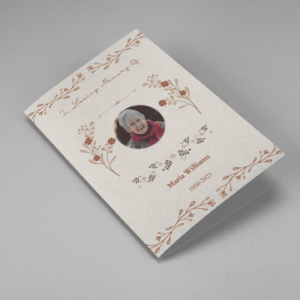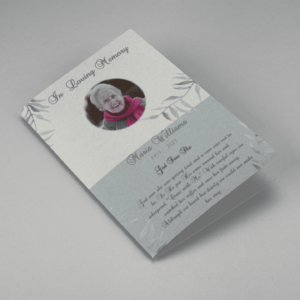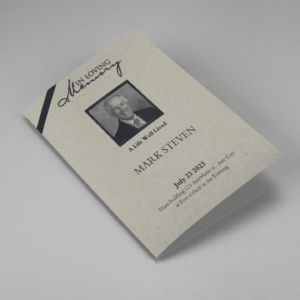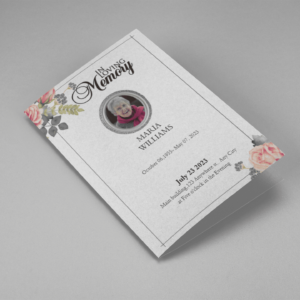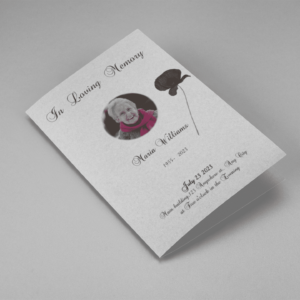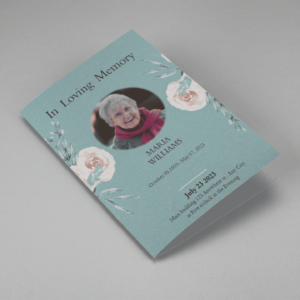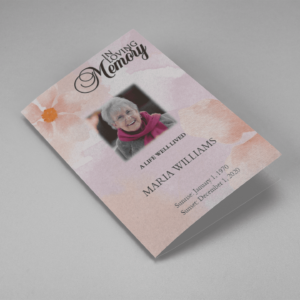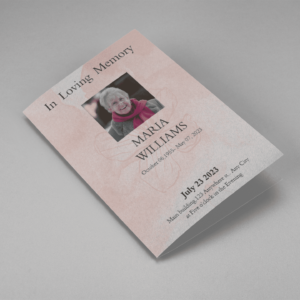An Obituary Samples is a concise written tribute to a deceased individual, usually published in newspapers or online. It serves as an announcement of their passing while commemorating their life and accomplishments. An obituary includes essential details such as the person’s name, age, date of birth, and date of death. It often outlines the person’s background, family, education, and career highlights. Besides factual information, it captures the essence of the person’s personality, passions, and contributions to society. Obituaries offer comfort to grieving families and provide a platform for friends and community members to share memories and express condolences.
How these obituary samples are helpful?
Obituary samples are incredibly helpful when writing an obituary because they serve as templates and guidelines for crafting a meaningful tribute. Here’s how they can assist:
- Structure and Format: Obituary samples provide a standard structure, helping writers organize their thoughts and information effectively. They include sections for personal details, family information, achievements, and a closing statement.
- Language and Tone: Sample Obituaries showcase appropriate language and tone for such delicate occasions. They demonstrate how to strike a balance between conveying grief and celebrating the person’s life.
- Inclusion of Key Information: Following a sample ensures that vital information, such as dates, names, and relationships, is not overlooked.
- Inspiration: Samples inspire writers with ideas on how to personalize the obituary, highlighting the unique qualities and contributions of the deceased.
- Saves Time: Utilizing a sample reduces the time spent on formatting and content organization, allowing the writer to focus on capturing the essence of the person’s life.
Writing Obituary From Obituary Sample
Writing an obituary is a respectful way to honor and remember someone who has passed away. You can use an obituary sample as a guide, but make sure to personalize it to reflect the individual’s life, personality, and accomplishments. Here’s a step-by-step guide on how to write an obituary using a sample as a reference:
Step 1: Gather Information
Collect essential information about the deceased person, including their full name, date of birth, date of passing, place of passing, and any significant life events or achievements.
Step 2: Choose a Tone
Decide on the tone of the obituary. It can be formal, informal, celebratory, or a combination of these, depending on the individual’s personality and the preferences of their family.
Step 3: Start with the Basics
Begin the obituary with the most important information: the full name of the deceased, date of birth, and date of passing. You can also include the location of their passing if desired.
Include details about the person’s life, such as their upbringing, education, career, hobbies, and passions. Highlight significant milestones, achievements, and contributions they made to their community or profession.
Step 5: Mention Family Members
List surviving family members, including spouse, children, parents, siblings, and any close relatives. You can also mention predeceased family members if relevant.
Step 6: Highlight Personality and Character
Describe the person’s personality traits, values, and what made them unique. Share anecdotes or stories that capture their essence and the impact they had on others.
Step 7: Include Funeral or Memorial Service Details
Provide information about any upcoming funeral, memorial service, or celebration of life. Include details such as date, time, location, and how friends and family can participate or pay their respects.
Step 8: Express Gratitude and Condolences
If desired, express gratitude for the support and condolences received from friends and family during this difficult time. You can also mention any preferred methods of offering condolences or supporting the family.
Step 9: Edit and Review
Carefully review the obituary for accuracy, clarity, and tone. Make sure all information is correct, and the language is respectful and appropriate.
Step 10: Personalize
Add personal touches that make the obituary unique to the individual. Include memories, hobbies, favorite quotes, or anything else that paints a full picture of who they were.
Step 11: Seek Feedback
Share the draft with other family members or close friends for their input. They might provide additional insights or details that should be included.
Step 12: Finalize and Publish
Make any necessary revisions based on feedback, and then finalize the obituary. Once it’s ready, publish it in the chosen newspapers, on online platforms, or distribute it to friends and family as appropriate.
Changes required while writing obituary from obituary sample:
When writing an obituary based on a sample, it’s crucial to make changes and modifications to ensure it accurately reflects the individual’s life and personality. Here are some key adjustments to consider:
- Personalize the content: Replace generic information in the sample with specific details about the deceased, such as their hobbies, interests, accomplishments, and unique qualities.
- Include personal anecdotes: Incorporate meaningful stories and memories that illustrate the person’s character and impact on others. These personal touches make the obituary more heartfelt.
- Adjust the tone: Adapt the tone of the obituary to match the personality and preferences of the deceased. Some obituaries may be formal and solemn, while others might be more light-hearted and celebratory.
- Tailor the length: Modify the length of the obituary as needed, making sure to include essential information without being overly lengthy.
- Verify details: Ensure the accuracy of all factual information, such as dates, names, and relationships. Double-check the spelling of names and places.
- Consider cultural or religious aspects: If the deceased had specific cultural or religious beliefs, incorporate elements that are relevant and respectful.
- Seek input from family and friends: Consult with close family members and friends to gather additional insights and stories to include in the obituary.
- Reflect on the audience: Keep in mind the readers of the obituary, including family, friends, colleagues, and the community. Tailor the content to resonate with them and provide comfort during their time of grief.
- Add a personal touch: Consider adding a special quote, poem, or passage that holds significance for the deceased or their loved ones.
- Review and edit: After making modifications, thoroughly review the obituary for clarity, coherence, and sensitivity. Edit for grammar, punctuation, and style.
Obituary Samples Template
-
Searching for a Oak Leaf With Gold Oval Frame Half Page Funeral Program that is easy to print and amass and has a cutting-edge look? The Oak Leaf With Gold Oval Frame Half Page Funeral Program is the Perfect decision because it measures 8.5”x 5.5”.
- No Limitation on Content, Edit anything
- Edit anytime – unlimited revisions even after purchased
- Get a printable PDF downloaded to get it printed on your own.
-
Searching for a Brown and White Classic Funeral Program Half Page Program that is easy to print and amass and has a cutting-edge look? The Brown and White Classic Funeral Program Half Page Program is the Perfect decision because it measures 8.5”x 5.5”.
- No Limitation on Content, Edit anything
- Edit anytime – unlimited revisions even after purchased
- Get a printable PDF downloaded to get it printed on your own.
-
Searching for a Purple Elegant Watercolor Half Page Funeral Program Template that is easy to print and amass and has a cutting-edge look? The Purple Elegant Watercolor Half Page Funeral Program Template is the Perfect decision because it measures 8.5”x 5.5”.
- No Limitation on Content, Edit anything
- Edit anytime – unlimited revisions even after purchased
- Get a printable PDF downloaded to get it printed on your own.
-
Searching for a Cream and Green Photo Obituary Half Page Program that is easy to print and amass and has a cutting-edge look? The Cream and Green Photo Obituary Half Page Program is the Perfect decision because it measures 8.5”x 5.5”.
- No Limitation on Content, Edit anything
- Edit anytime – unlimited revisions even after purchased
- Get a printable PDF downloaded to get it printed on your own.
-
Searching for a Cream Simple Elegant Photo Church Half Page Program that is easy to print and amass and has a cutting-edge look? The Cream Simple Elegant Photo Church Half Page Program is the Perfect decision because it measures 8.5”x 5.5”.
- No Limitation on Content, Edit anything
- Edit anytime – unlimited revisions even after purchased
- Get a printable PDF downloaded to get it printed on your own.
-
Searching for a Samovar Silver Half Page Funeral Program Template that is easy to print and amass and has a cutting-edge look? The Samovar Silver Half Page Funeral Program Template is the Perfect decision because it measures 8.5”x 5.5”.
- No Limitation on Content, Edit anything
- Edit anytime – unlimited revisions even after purchased
- Get a printable PDF downloaded to get it printed on your own.
-
Searching for an Elegant Beige Half Page Funeral Program Template that is easy to print and amass and has a cutting-edge look? The Elegant Beige Half-Page Funeral Program Template is the Perfect decision because it measures 8.5”x 5.5”.
- No Limitation on Content, Edit anything
- Edit anytime – unlimited revisions even after purchased
- Get a printable PDF downloaded to get it printed on your own.
-
Searching for a White Floral Pro Half Page Funeral Program Template that is easy to print and amass and has a cutting-edge look? White Floral Pro Half Page Funeral Program Template is the Perfect decision because it measures 8.5”x 5.5”.
- No Limitation on Content, Edit anything
- Edit anytime – unlimited revisions even after purchased
- Get a printable PDF downloaded to get it printed on your own.
-
Searching for a Grey and Burgundy Elegant Half Page Funeral Program Template that is easy to print and amass and has a cutting-edge look? Grey and Burgundy Elegant Half Page Funeral Program Template is the Perfect decision because it measures 8.5”x 5.5”.
- No Limitation on Content, Edit anything
- Edit anytime – unlimited revisions even after purchased
- Get a printable PDF downloaded to get it printed on your own.
-
Searching for a Soft Green and Grey Minimalist Floral Half Page Funeral Program Template that is easy to print and amass and has a cutting-edge look? Soft Green and Grey Minimalist Floral Half Page Funeral Program Template is the Perfect decision because it measures 8.5”x 5.5”.
- No Limitation on Content, Edit anything
- Edit anytime – unlimited revisions even after purchased
- Get a printable PDF downloaded to get it printed on your own.
-
Searching for a Gray Elegant Oval Frame Half Page Funeral Program Template that is easy to print and amass and has a cutting-edge look? Gray Elegant Oval Frame Half Page Funeral Program Template is the Perfect decision because it measures 8.5”x 5.5”.
- No Limitation on Content, Edit anything
- Edit anytime – unlimited revisions even after purchased
- Get a printable PDF downloaded to get it printed on your own.
-
Searching for a Blue Organic Minimal Half Page Funeral Program Template that is easy to print and amass and has a cutting-edge look? Blue Organic Minimal Half Page Funeral Program Template is the Perfect decision because it measures 8.5”x 5.5”.
- No Limitation on Content, Edit anything
- Edit anytime – unlimited revisions even after purchased
- Get a printable PDF downloaded to get it printed on your own.
-
Searching for a Pink and Orange Watercolour Half Page Funeral Program Template that is easy to print and amass and has a cutting-edge look? Pink and Orange Watercolour Half Page Funeral Program Template is the Perfect decision because it measures 8.5”x 5.5”.
- No Limitation on Content, Edit anything
- Edit anytime – unlimited revisions even after purchased
- Get a printable PDF downloaded to get it printed on your own.
-
Searching for a Pink Floral Paper Half Page Funeral Program Template that is easy to print and amass and has a cutting-edge look? Pink Floral Paper Half Page Funeral Program Template is the Perfect decision because it measures 8.5”x 5.5”.
- No Limitation on Content, Edit anything
- Edit anytime – unlimited revisions even after purchased
- Get a printable PDF downloaded to get it printed on your own.
Obituary Samples : Helping Videos
Frequently Asked Question On Obituary Sample
Here, we provide some frequently asked questions related to sample obituary which can be helpful for you at time of writing obituary:
What is an obituary sample?
An obituary sample is a template or example of how an obituary is typically structured and written. It serves as a guide to help individuals create an obituary for their loved one who has passed away.
How do I use an obituary sample?
You can use an obituary sample as a starting point for crafting your own obituary. Begin by replacing the sample’s details with relevant information about your loved one. Modify and personalize the language to reflect their personality, accomplishments, and relationships.
What should I include in an obituary sample?
An obituary sample typically includes the deceased person’s full name, date of birth, date of passing, a brief overview of their life and accomplishments, information about surviving family members, details about funeral or memorial services, and expressions of gratitude or condolence
Can I include specific details from the deceased's life in an obituary sample?
Absolutely. In fact, adding specific details like hobbies, interests, achievements, and personal stories can make the obituary more meaningful and reflective of the person’s life.
Is there a specific format for using an obituary sample?
While there’s no strict format, obituaries generally start with basic information about the deceased and progress to more detailed information about their life, family, and services. You can follow the structure of the sample, but feel free to adjust it to fit your preferences.
Can I use multiple obituary samples for reference?
Absolutely. It can be helpful to look at multiple samples to get a well-rounded understanding of how obituaries can be structured and written. This can provide you with more options for language and formatting.






